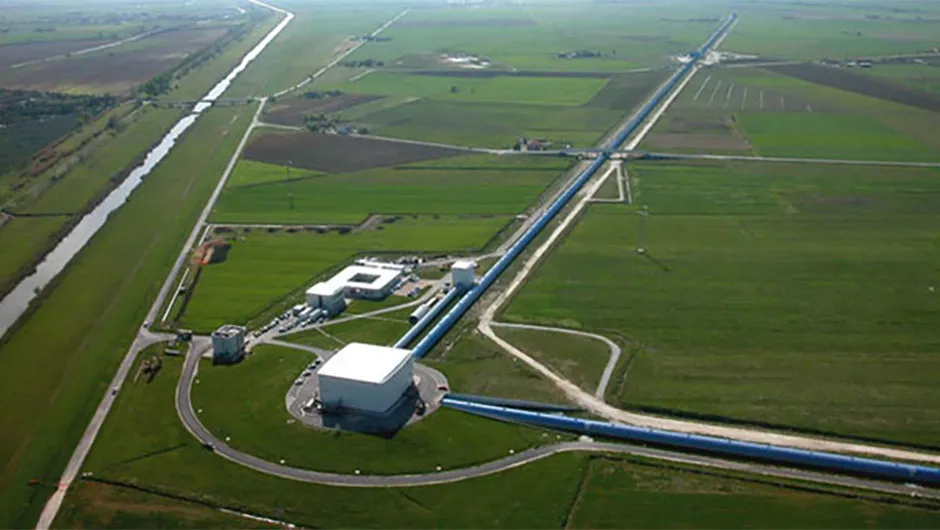Scientists have reported the first joint detection of gravitational waves, made with the LIGO and Virgo detectors.This makes it the fourth announced detection of a black hole merger and the first significant gravitational wave signal detected by the Virgo detector.
The two LIGO (Laser Interferometer Gravitational-Wave Observatory) detectors are based in Louisiana and Washington in the US, while the Virgo detector is located near Pisa in Italy.
All three detected a gravitational wave signal produced by the convergence of two black holes.
Gravitational waves are ripples in space-time caused by massive, violent events, such as a black hole collision.
They were first presented as a theory by Albert Einstein in his 1915 general theory of relativity, and proven in February 2016 with the announcement that the LIGO experiment had detected gravitational waves for the first time.
Einstein's theory explains how massive bodies produce fluctuations in the fabric of space-time. These fluctuations are called gravitational waves.

This most recent detection occurred on 14 August 2017 at 10:30:43 UTC.
The black holes that merged to produce the signal had masses of about 31 and 25 times the mass of our Sun, and are located about 1.8 billion lightyears away.
The newly-merged black hole has about 53 times the mass of our Sun, so scientists conclude about three solar masses were converted into gravitational wave energy during the merging.
“It is wonderful to see a first gravitational-wave signal in our brand new Advanced Virgo detector only two weeks after it officially started taking data,” says Jo van den Brand, spokesperson of the Virgo collaboration.
“That’s a great reward after all the work done in the Advanced Virgo project to upgrade the instrument over the past six years.”
The fact that three detectors were used in this detection marks a leap forward for scientists.
The volume of Universe likely to contain the source of gravitational waves is reduced by a factor of 20 when using a three-detector network as opposed to a two-detector network, scientists say.
“As we increase the number of observatories in the international gravitational wave network, we not only improve the source location, but we also recover improved polarization information that provides better information on the orientation of the orbiting objects as well as enabling new tests of Einstein’s theory,” says Fred Raab, LIGO associate director for observatory operations.

